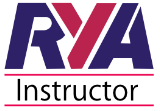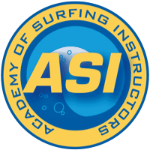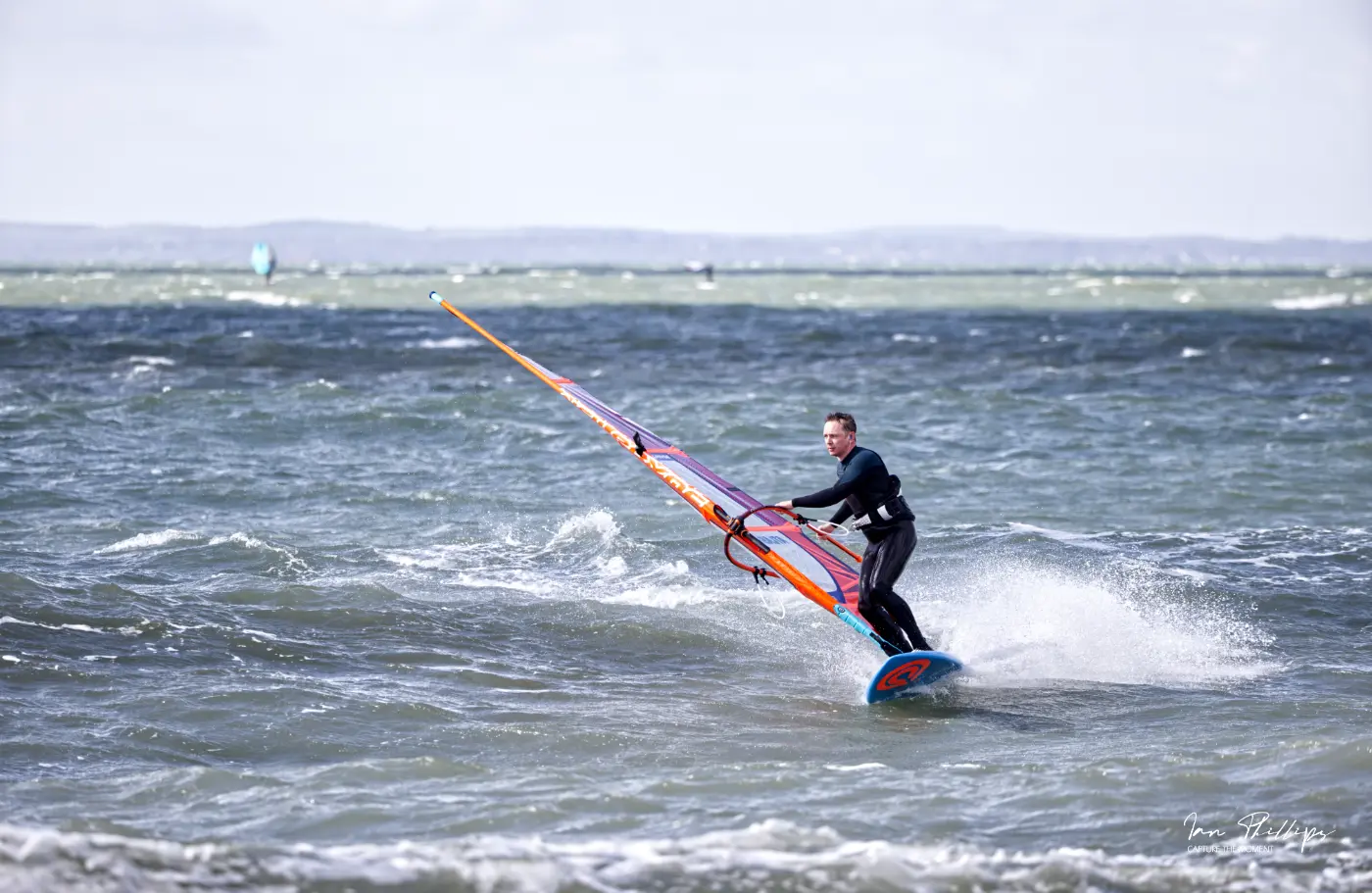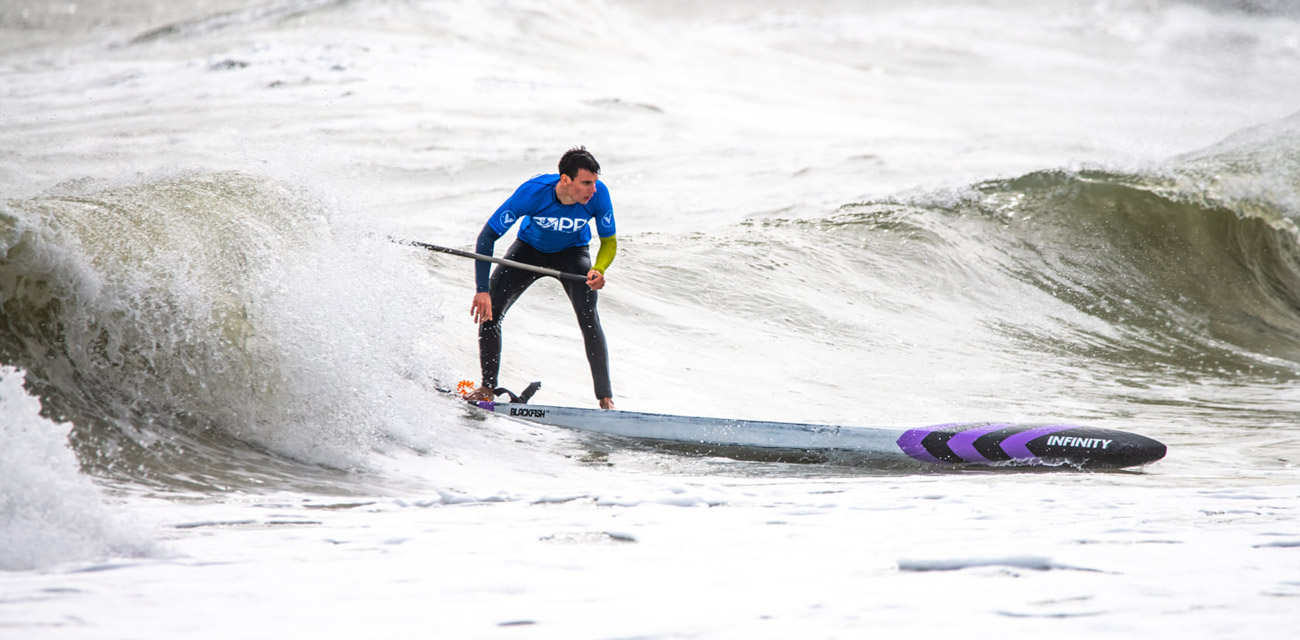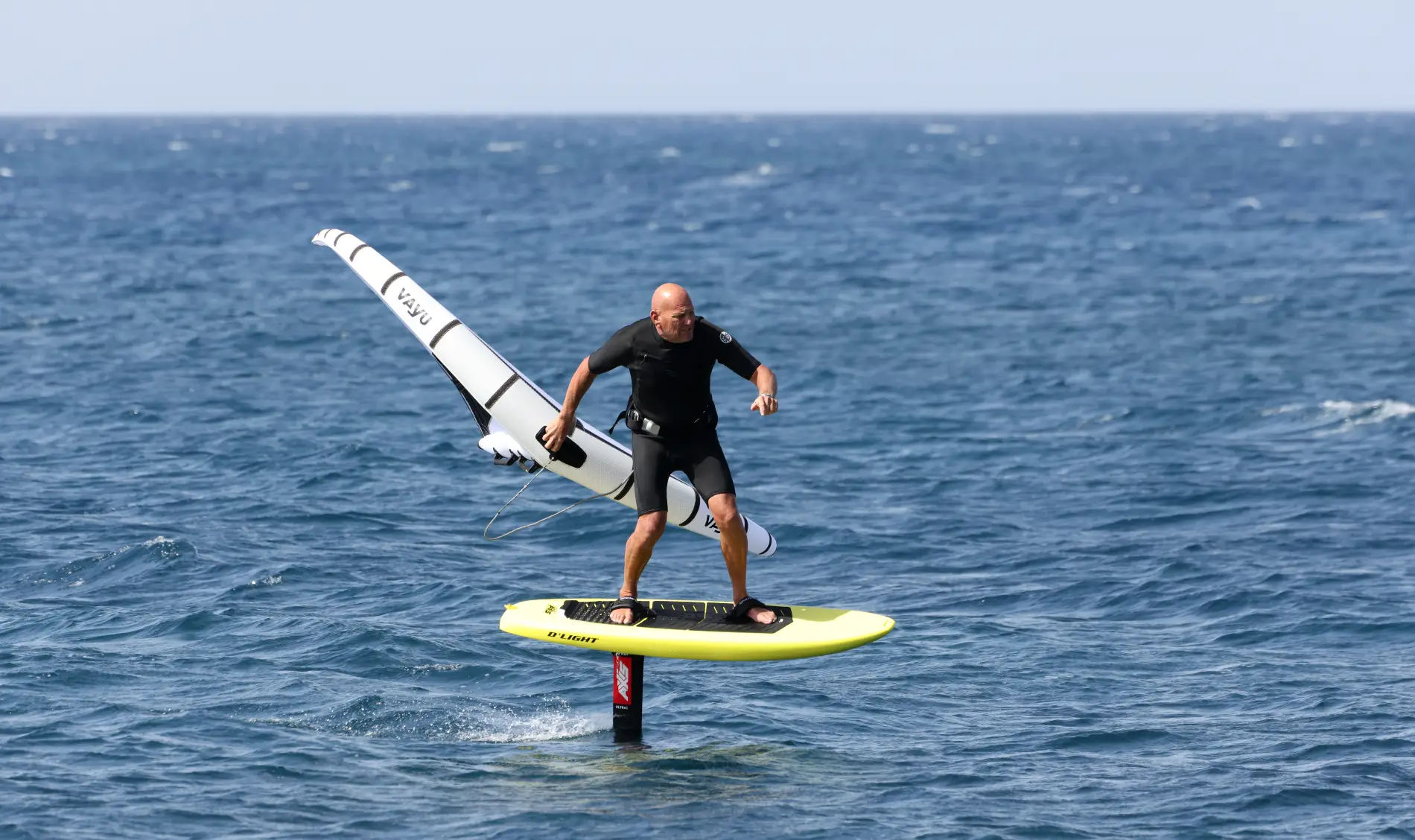It is useful if you have a basic understanding of the kit and wind before you join us for a windsurfing lesson on the water.
You don’t need to become an expert, but it is worth you having a quick read of this help guide, which should only take a few minutes.
Wind
Directions
Let’s start with the relationship between wind and a beach. Below is an image, showing the terminology we use to describe the wind direction relative to a beach we may be windsurfing from.
Side shore – simply means the wind is coming from either let or right and directly along the beach. You can sail straight in and out easily.
Cross on – is where the wind is blowing from the sea onto the beach at an angle. A good angle as it lets you sail out easily, even when there are waves.
On shore – this is often where the wind is blowing straight onto the beach. In light winds it is relatively easy to sail up and down the beach, but as winds get stronger and waves get bigger it can be harder to get out, due to the angle.
Off shore – a wind coming directly off the beach and out to sea. Probably the most dangerous wind direction as it blows you straight out to sea if you’re not careful. Also the water will be quite flat near the beach but get rougher the further out you go.
Cross off – when the wind is blowing from the beach at an angle. The wind can be a bit patchy as it leaves the land and often strengthens the further out you go. You may see the water as quite flat, but as you go further out it can get choppier.
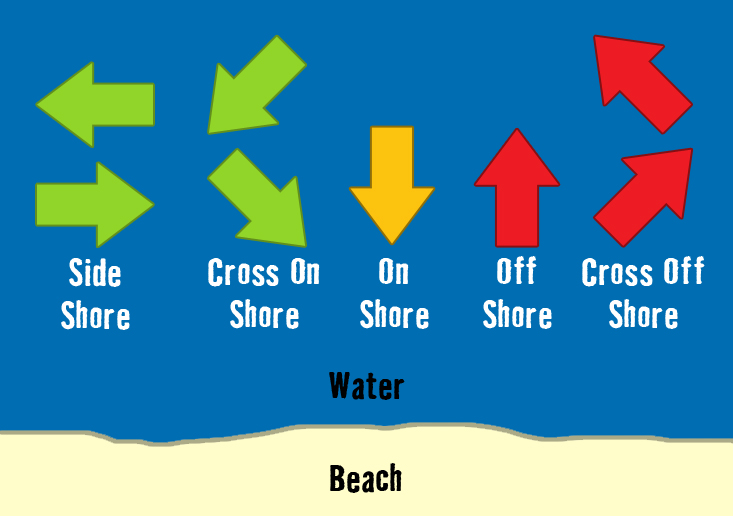
Strength
We measure wind speed using the beaufort scale. The graphic below shows the wind speeds, and how they can be seen in relation to things like smoke, trees and other on land elements.
To put it into perspective, when we’re teaching a beginner windsurfing lesson, we look to have winds between beaufort 1 to 3.
For an intermediate session i.e working on the those basic skills, we may aim for beaufort 3 to 4.
If someone is looking to get into footstraps, using a harness and planing on smaller boards, then we need a force 4.
It is important to realise this is only a guide as the water state will also play a part with more exposed water making life harder for beginner windsurfers.
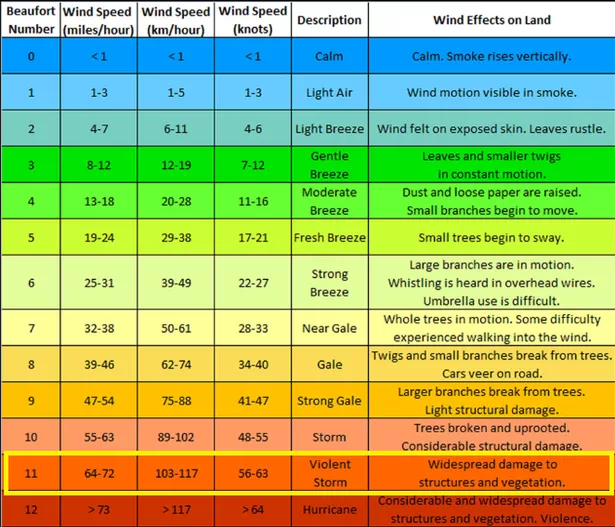
Points of sail
With boats and windsurfer and wing foil board, we have the ability to sail in every direction, except 45 degrees either side of the actual wind direction. This image shows how that work and the names of the points of sail.
On a run is the slowest point of sail , whilst broad reach is the fastest.
On a beginners windsurfing lesson we will teach you to work out your options from the beach before launching and then what options you have for getting back to your start point.
You don’t need to remember the names, but you do need to realise the logic, so you’re conscious of you r options when on the water.
It’s also worth noting that the wind direction may change throughout the day.
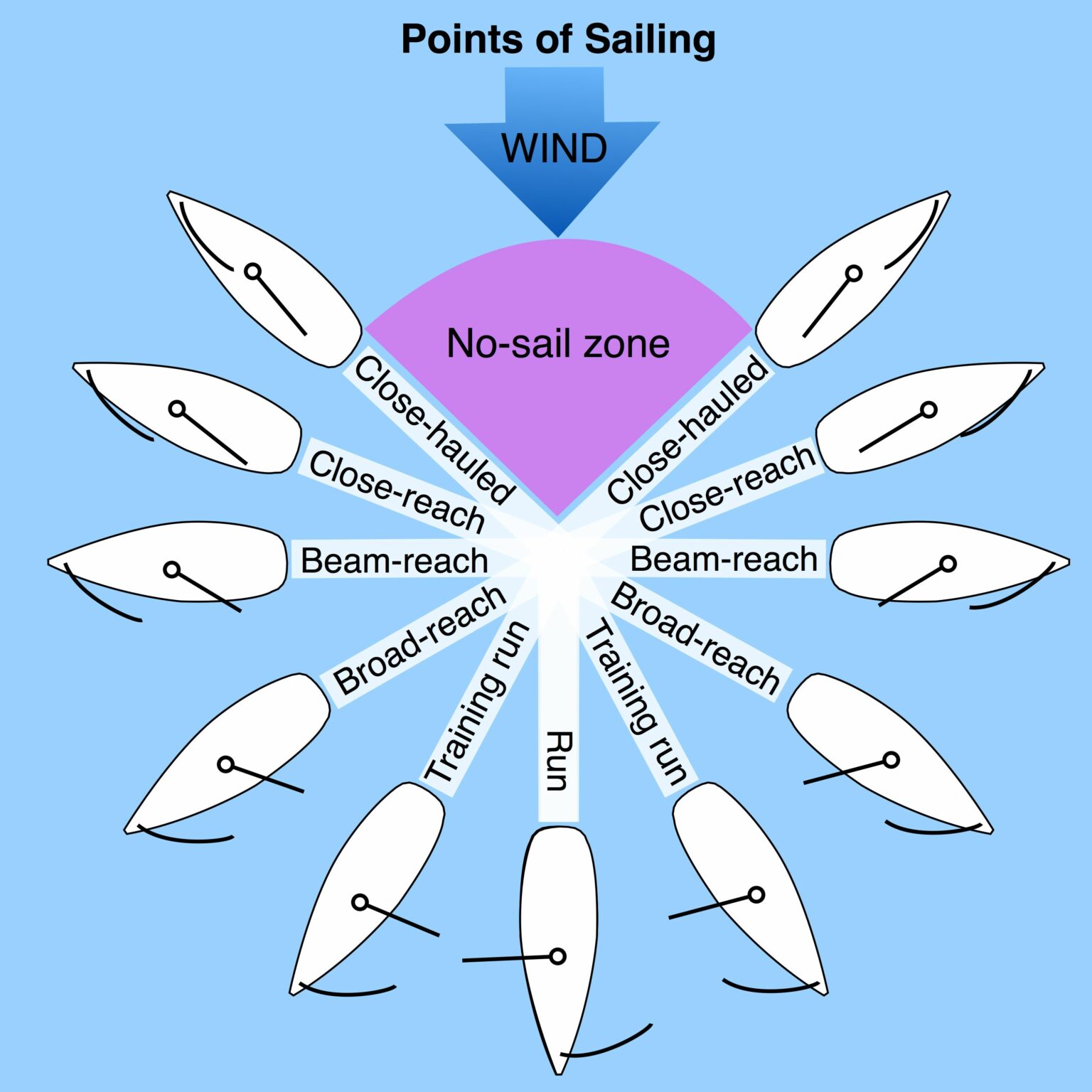
Names of the parts of a windsurf rig and board.
Once again , you don’t need to memorise any of this, but it is worth recognising:
- the mast
- boom
- clew
- uphaul
- mastfoot
- front and back of board
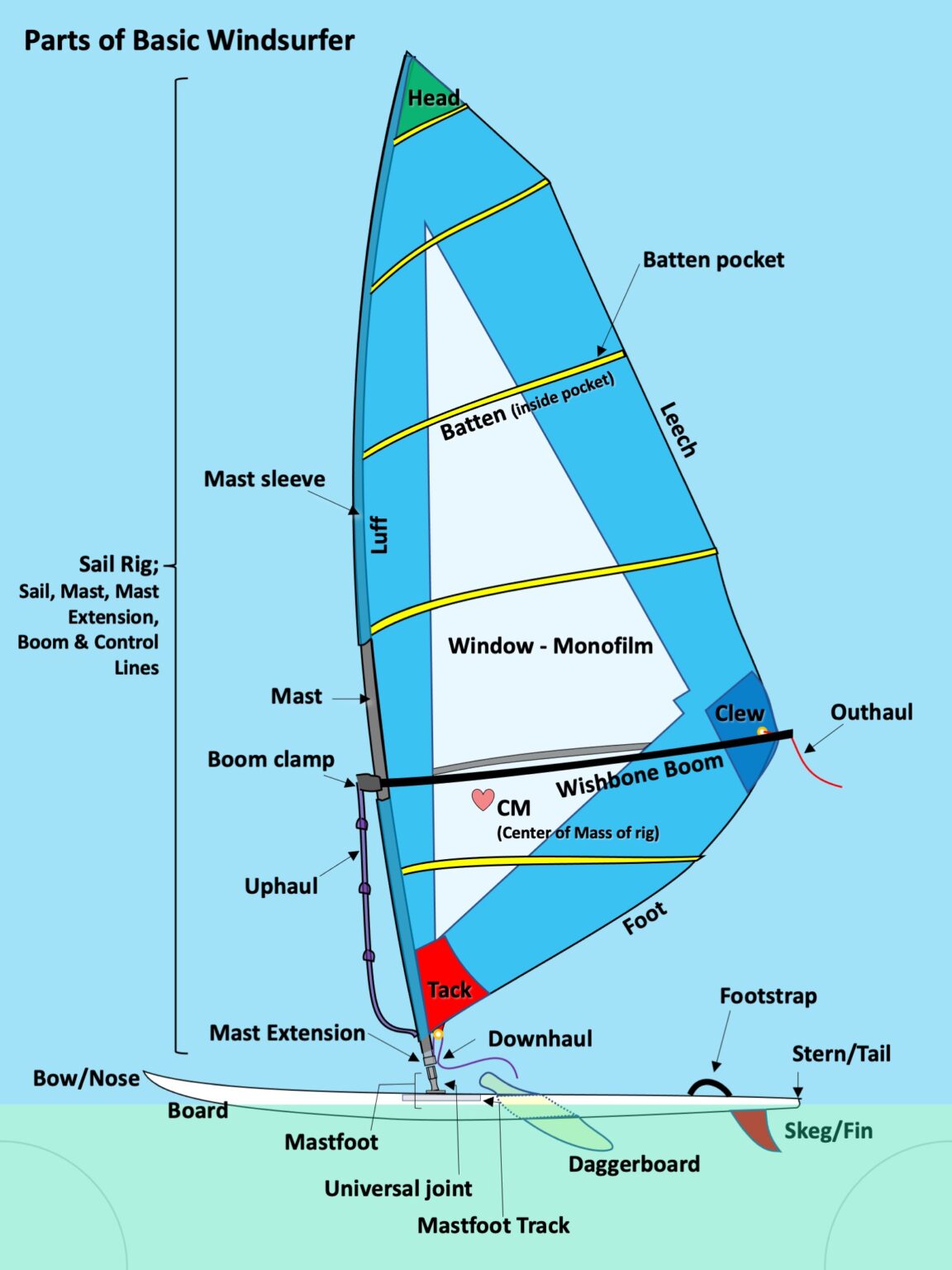
Why is it useful to know the basics
As we’ve said, you don’t have to know anything, but if you can relate to a few basic concepts and names, it makes your time on the water more productive.
Our beginner windsufing lessons are aimed at total novices, but we like to get everyone going pretty quickly so you maximise your time on the water.
Your instructor will explain things to you both on the beach and when out on the water, using the 2 way radios everyone has fitted to their hats as this makes talking so much easier for instruction and tips when you’re actually in action.
